
Roots of Hair and Rest
Our understanding of hair, particularly textured hair, often begins with what we see and feel ❉ the coils, the kinks, the waves. Yet, beneath the surface of tactile sensation and visual beauty lies a profound connection to the body’s rhythms and the ancient wisdom of repose. For countless generations, across diverse lands, communities have observed a subtle yet powerful link between the quietude of the body and the vibrancy of the strands. This elemental understanding suggests that hair, far from being a mere adornment, serves as a delicate barometer of inner calm and physiological balance.
The very structure of textured hair, with its unique follicular architecture, demands a particular consideration of its well-being. Unlike straight hair, which typically grows in a straight line from a round follicle, coily and kinky strands emerge from elliptical follicles, their journey to the surface marked by twists and turns. This inherent geometry, while gifting unparalleled volume and character, also presents distinct needs for moisture retention and gentle handling. The foundational health of these strands, therefore, is not merely a matter of external application, but rather an echo of the internal environment, where rest holds a significant, often overlooked, place.
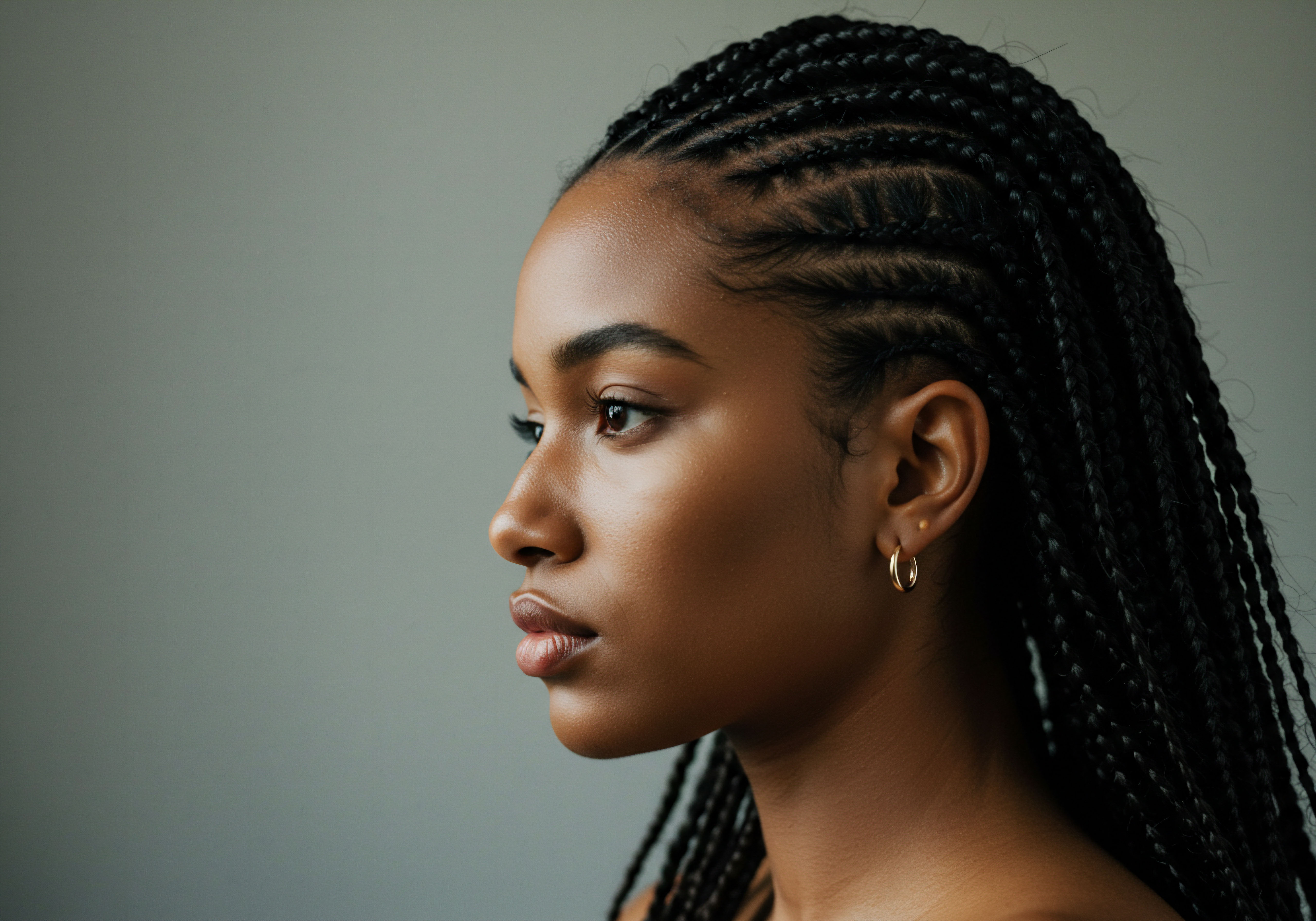
Hair Anatomy and Physiology Specific to Textured Hair
To truly appreciate the ancestral insights into hair health and rest, a basic acquaintance with hair’s biological makeup is helpful. Each strand springs from a Follicle, a tiny organ nestled within the skin. At the base of this follicle resides the dermal papilla, a cluster of cells nourished by blood vessels, which serves as the hair’s life support system. The hair shaft itself, the part we see, is primarily composed of keratin, a protein.
For textured hair, the follicle’s shape and the distribution of keratin within the cortex influence its curl pattern, creating the characteristic spirals and zigzags. This structural uniqueness makes textured hair prone to dryness, as the twists can hinder the natural oils (sebum) from traveling down the strand, and also susceptible to breakage if not handled with profound gentleness.
Understanding the nuances of hair’s growth cycle provides further insight into the wisdom of rest. Hair does not simply grow continuously; it follows a cyclical pattern with distinct phases. The Anagen Phase marks active growth, followed by the catagen phase, a brief transitional period, and finally the telogen phase, a resting stage where the hair detaches before new growth begins.
Disruptions to this delicate cycle, often triggered by stress or systemic imbalance, can prematurely push hairs into the resting or shedding phases. Ancestral practices, with their emphasis on calm and regeneration, inherently supported the smooth progression of these cycles, allowing hair to flourish in its natural rhythm.
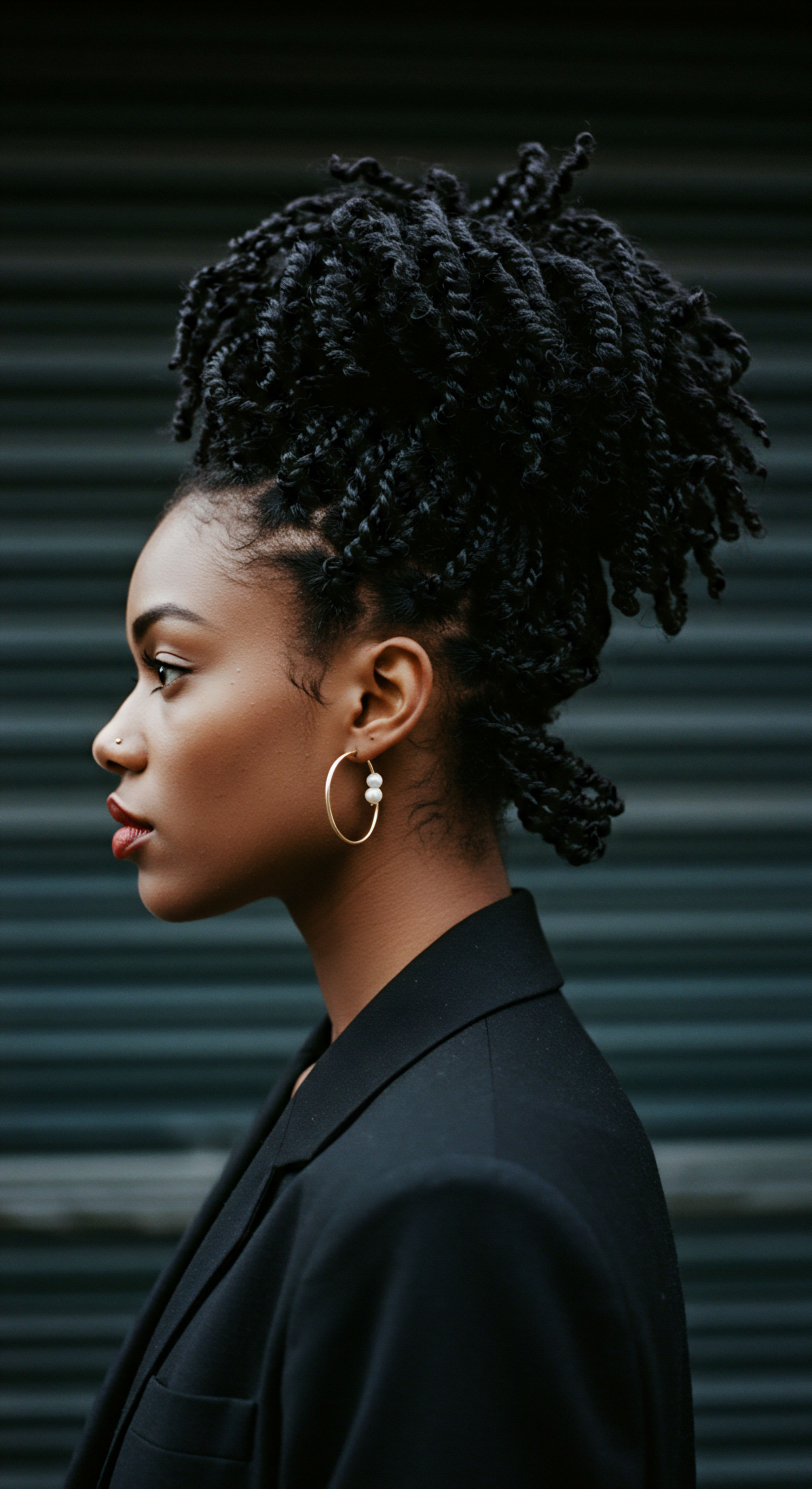
What is the Hair’s Biological Clock?
Beyond the visible phases of growth, hair follicles possess their own intrinsic biological rhythms, often synchronized with the body’s larger circadian clock. This internal timing mechanism, influenced by light and darkness, dictates cellular activity, including the proliferation of cells within the hair bulb. During periods of deep rest, particularly during sleep, the body undergoes significant repair and regeneration.
This cellular restoration is not limited to major organs; it extends to the very roots of our hair. The dermal papilla cells, crucial for hair vitality, are actively engaged in metabolic processes that benefit from uninterrupted periods of quietude.
Hair’s innate vibrancy is deeply tied to the body’s internal rhythms and the quiet work of cellular repair during periods of repose.
Ancient cultures, without the aid of microscopes or biochemical assays, intuited this connection. Their practices, often rooted in observation and a reverence for natural cycles, intuitively supported the hair’s biological clock. They understood that a body at peace could better sustain its outward manifestations of health, including lustrous hair. The rhythms of day and night, activity and stillness, were not merely divisions of time but guiding principles for well-being.
The vocabulary used to describe textured hair in many cultures reflects a deep respect for its distinct qualities. Terms often speak to its strength, its resilience, its beauty, rather than framing it as something to be “tamed” or “straightened.” This lexicon, passed down through generations, subtly reinforces the idea that hair is an extension of identity and spirit, deserving of care that extends beyond superficial grooming.
- Coil Pattern ❉ The specific shape and tightness of the hair’s spiral, ranging from loose waves to tight, spring-like coils.
- Porosity ❉ The hair’s ability to absorb and retain moisture, influenced by the outer cuticle layer.
- Density ❉ The number of individual hair strands on the scalp, impacting overall volume.

Ritual Practices for Hair Serenity
As we move from the foundational understanding of hair’s biology to the daily and periodic customs that shape its care, a fascinating landscape of ancestral practices emerges. These are not merely steps in a grooming routine; they are acts of intention, often steeped in cultural meaning, designed to bring the body and spirit into a state of quietude conducive to hair’s vitality. For many, the act of tending to hair was, and remains, a sacred moment, a quiet interlude in the day’s bustle, reflecting a profound awareness of hair as an extension of self and spirit. This section will explore how these practices, from nightly preparations to communal ceremonies, fostered a sense of peace that directly benefited hair health.
The concept of “beauty sleep” is far from a modern invention. Ancient cultures, long before the advent of scientific laboratories, recognized the restorative power of nighttime for overall well-being, and by extension, for hair. Their rituals around rest were often meticulous, creating a serene environment for the body to recuperate. This deep, undisturbed repose allowed for cellular repair and hormonal balance, both crucial for the hair’s sustained vibrancy.

Protective Styling and Nighttime Sanctuaries
One of the most widely practiced ancestral customs linking rest and hair health involves protective styling, particularly before sleep. Across African, Asian, and Indigenous cultures, braiding, twisting, or wrapping hair before bed served multiple purposes. These methods minimized friction against bedding, reducing tangles and breakage.
Beyond the practical, however, these nighttime preparations often held a deeper, almost meditative quality. The rhythmic motion of braiding or twisting could be a calming prelude to sleep, a moment of quiet reflection that eased the mind as much as it protected the hair.
Consider the widespread practice of Hair Wrapping. In many African and Afro-diasporic traditions, covering the hair with soft fabrics like silk or satin scarves or bonnets before sleep was a common practice. This protected the hair from the moisture-absorbing properties of cotton pillowcases, which can strip textured hair of its natural oils, leading to dryness and breakage.
This simple act also served as a demarcation of time, a signal that the day’s activities were concluding and a period of rest was beginning. The tactile sensation of the soft fabric against the scalp could be soothing, contributing to a sense of security and readiness for sleep.
Nightly rituals, like protective styling and hair wrapping, transcend mere grooming, offering moments of tranquility that shield hair from harm and invite deep rest.
In some Native American traditions, the careful unbraiding and re-braiding of hair before sleep was not just about maintaining neatness but also about spiritual cleansing and preparation for dreams. The hair, seen as a conduit to spiritual realms, was tended with reverence, and its protection during sleep was considered vital for both physical and spiritual well-being. The very act of this ritual, often performed in quiet contemplation, contributed to a restful state.

Hair Oiling and Scalp Massage
The application of natural oils and the practice of scalp massage before rest were common across various cultures, from Ayurvedic traditions in India to practices in ancient Egypt. These rituals served to nourish the scalp, stimulate blood flow, and condition the hair. More than just physical benefits, the gentle, repetitive motion of a scalp massage could induce a state of deep relaxation, alleviating tension and promoting a sense of calm. This physiological response, reducing stress hormones, directly supported the body’s ability to enter restorative sleep, which in turn, supported hair growth and vitality.
For instance, in traditional Indian hair care, warm oil massages with substances like Coconut Oil or brahmi oil were often performed in the evening. This was not merely a cosmetic step; it was part of a holistic regimen to balance the body’s energies (doshas) and prepare for a restful night. The warmth of the oil, combined with the gentle pressure, created a soothing experience that calmed the nervous system, leading to more profound sleep and, consequently, healthier hair.
| Practice Protective Braiding/Twisting |
| Cultural Origin African, Indigenous, Asian |
| Hair Health Benefit Reduced breakage, tangle prevention, moisture retention |
| Rest Connection Calming ritual, mental preparation for sleep |
| Practice Hair Wrapping/Bonnets |
| Cultural Origin African Diaspora, Middle East |
| Hair Health Benefit Protection from friction, moisture preservation |
| Rest Connection Signal for rest, sense of security, comfort |
| Practice Warm Oil Scalp Massage |
| Cultural Origin Ayurvedic (India), Ancient Egypt |
| Hair Health Benefit Stimulated circulation, nourishment, conditioning |
| Rest Connection Tension release, nervous system calm, sleep induction |
| Practice These practices illustrate the deep connection between mindful hair care and the cultivation of restful states. |
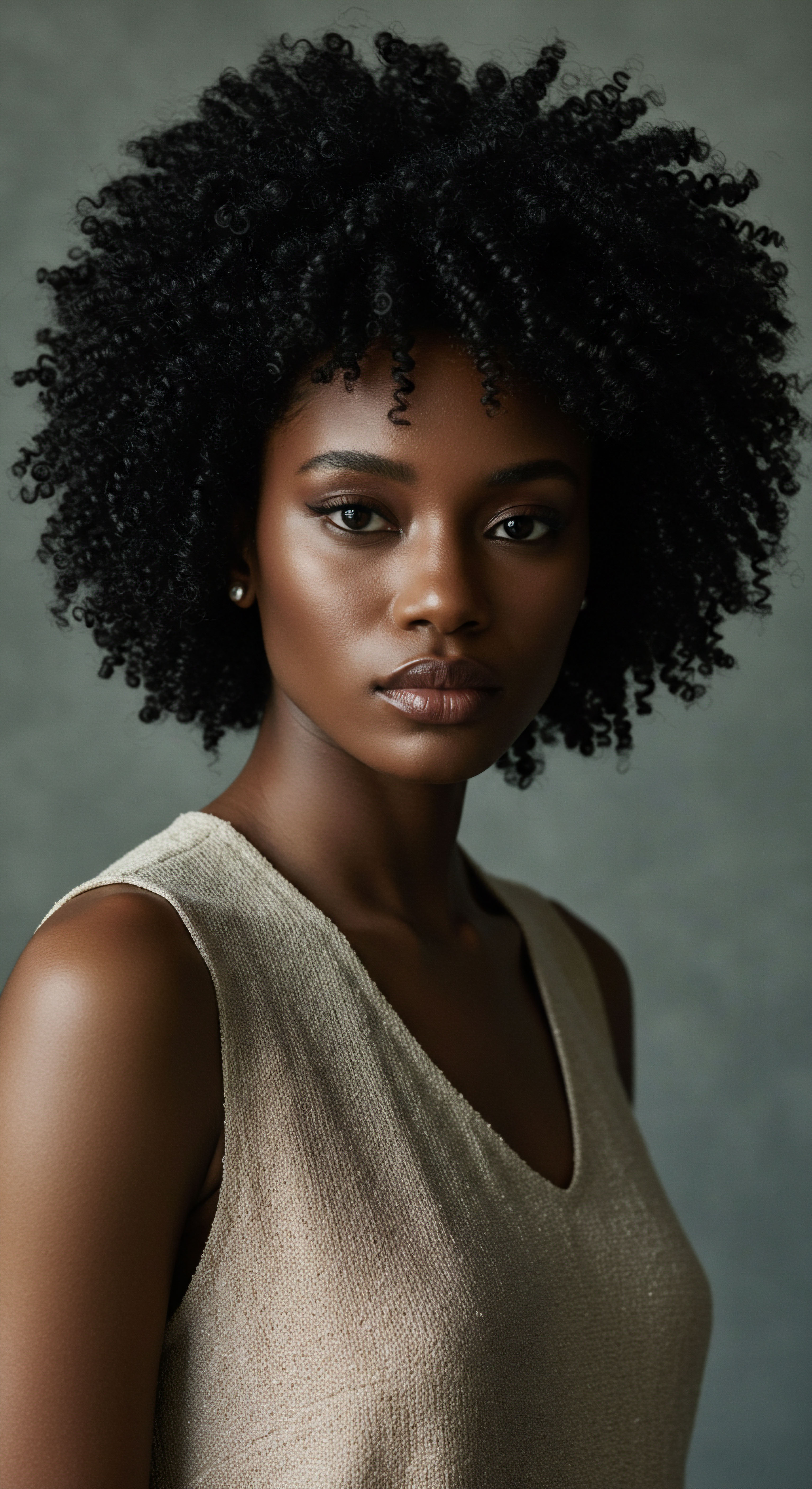
Communal Rest and Hair Traditions
Beyond individual nightly routines, some ancestral practices integrated communal aspects of rest with hair traditions. In certain African communities, for example, hair braiding could be a lengthy process, often taking place in the evening hours. This communal activity fostered social connection and a shared sense of calm. While one person’s hair was being styled, others might be sharing stories, singing, or simply sitting in comfortable silence.
This collective slowing down, the gentle touch of hands on hair, and the supportive atmosphere contributed to a pervasive sense of peace that transcended the individual. Such environments reduced collective stress, allowing for deeper individual and communal rest, which subtly contributed to the health of the hair being tended.
The emphasis on collective well-being in many traditional societies meant that practices supporting individual rest were often interwoven with community rhythms. The quietude of the village after dusk, the shared evening meals, and the communal preparations for sleep all contributed to an environment where the body’s natural need for rest was honored. Hair, in this context, benefited not just from direct care but from the broader societal framework that prioritized tranquility.

Relay The Interplay of Biology and Culture
How do these seemingly simple ancestral practices, centered on rest, translate into tangible benefits for hair health, particularly for textured strands? The answer lies in a sophisticated interplay of biological mechanisms, psychological states, and cultural reinforcement. This deeper exploration moves beyond surface-level observations to consider the subtle, yet powerful, ways that rest, in its varied forms, influences cellular vitality, hormonal balance, and the overall resilience of the hair follicle. It asks us to consider how ancient wisdom, often expressed through ritual, inadvertently or knowingly tapped into complex physiological processes.
The link between rest and hair vitality is more profound than merely avoiding physical damage. Deep, restorative rest, especially sleep, orchestrates a symphony of repair mechanisms within the body. During non-rapid eye movement (NREM) sleep, particularly the slow-wave sleep stages, the body significantly increases the production of growth hormone.
This hormone is not just for childhood growth; it plays a critical role in adult cellular repair and regeneration, including the active metabolic processes occurring within hair follicles. A consistent deprivation of this deep sleep can compromise the hair follicle’s ability to maintain its active growth phase (anagen) and efficiently repair daily wear and tear.
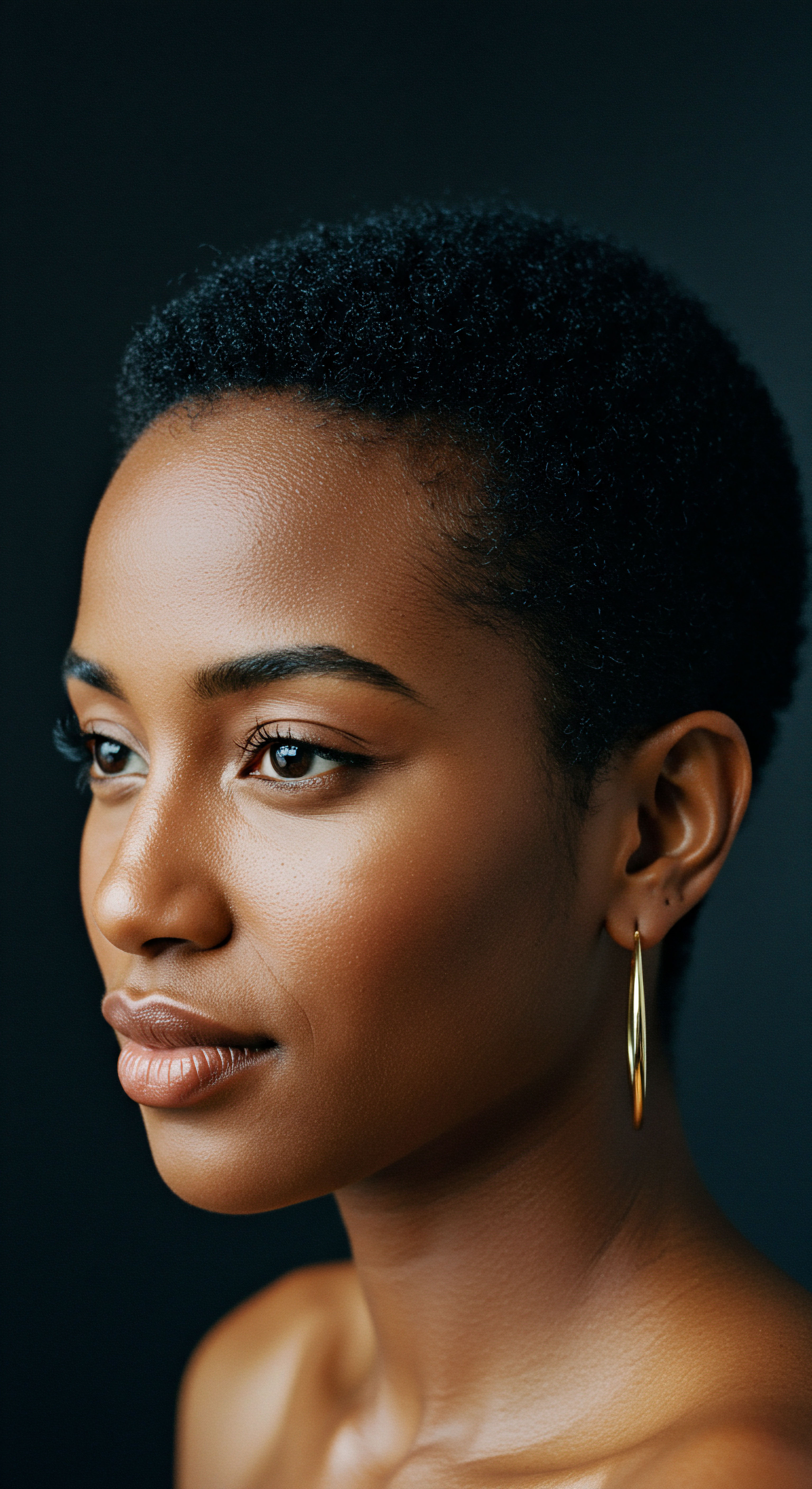
Can Circadian Disruption Affect Hair Follicle Cycles?
Emerging research highlights the importance of the Circadian Rhythm, the body’s internal 24-hour clock, in regulating various physiological processes, including hair follicle cycling. Studies suggest that hair follicles themselves possess their own circadian oscillators, which synchronize with the master clock in the brain. Disruptions to this rhythm, such as those caused by irregular sleep patterns, shift work, or chronic sleep deprivation, can negatively impact the hair growth cycle. For example, a 2005 study published in the Journal of Investigative Dermatology by Plonka et al.
while focusing on mice, provided compelling evidence that the hair follicle cycle exhibits a circadian rhythm, and that disrupting this rhythm can lead to alterations in hair growth. This research, though animal-based, points to a potential underlying mechanism by which chronic lack of consistent, restorative rest could impair human hair vitality by desynchronizing its intrinsic biological clock.
Consistent, restorative rest aligns the body’s circadian rhythm with the hair follicle’s own biological clock, supporting robust growth cycles.
This biological reality provides a scientific lens through which to appreciate ancestral practices that emphasized consistent rest and adherence to natural day-night cycles. The quiet evenings, the absence of artificial light extending activity into the night, and the cultural encouragement of early repose all contributed to a lifestyle that inherently supported a healthy circadian rhythm, thereby indirectly supporting hair follicle health at a cellular level.

The Psychosocial Dimension of Rest and Hair
Beyond the purely physiological, the psychological and social dimensions of rest also bear significant weight on hair health. Chronic stress, often a byproduct of insufficient rest, leads to elevated cortisol levels. While acute stress can temporarily affect hair, prolonged exposure to high cortisol can prematurely push hair follicles into the telogen (resting/shedding) phase, leading to increased hair fall.
Ancestral practices, with their emphasis on calm, communal support, and ritualized winding down, served as powerful stress mitigators. The shared experience of preparing for rest, the soothing touch of hands during hair care, and the overall atmosphere of tranquility cultivated a mental state less prone to the detrimental effects of chronic stress.
The communal aspects of hair care in many cultures, such as braiding circles or shared bathing rituals, were not merely about grooming. They were social acts that strengthened bonds, provided emotional support, and created a collective sense of calm. This social cohesion acted as a buffer against individual stressors, allowing for a deeper, more profound form of rest – both physical and mental. When the mind is at peace, the body’s restorative processes can operate more efficiently, extending their benefits to the hair.
- Reduced Cortisol ❉ Calm states, induced by rest, lead to lower levels of stress hormones.
- Enhanced Blood Flow ❉ Relaxation improves circulation, delivering vital nutrients to the scalp.
- Cellular Regeneration ❉ Deep sleep facilitates the repair and renewal of hair follicle cells.
The reverence for hair in many traditional societies also meant that its care was approached with mindfulness. This mindfulness, a form of active meditation, contributed to the overall state of rest. When one is fully present in the act of caring for hair, the mind quiets, and the body relaxes.
This holistic approach to well-being, where physical care is inseparable from mental and spiritual peace, offers a compelling framework for understanding the deep connection between rest and hair vitality. It underscores that true hair health is not a superficial outcome, but a manifestation of a balanced and serene internal landscape.

Reflection on Enduring Wisdom
The journey through ancestral practices linking rest and hair health unveils a profound and enduring wisdom. It shows us that the pursuit of vibrant strands is not a solitary endeavor confined to bottles and routines, but a deep connection to the body’s innate need for repose and the calming rhythms of life. From the quiet preparation for sleep in a family home to the communal solace found in shared hair rituals, our forebears intuitively understood that hair, particularly textured hair, flourishes when the entire being is at peace. This understanding invites us to reconsider our own hurried modern lives, prompting a gentle inquiry into how we might reintegrate moments of true stillness and thoughtful care, allowing our hair to truly reflect the deep, quiet vitality that resides within.
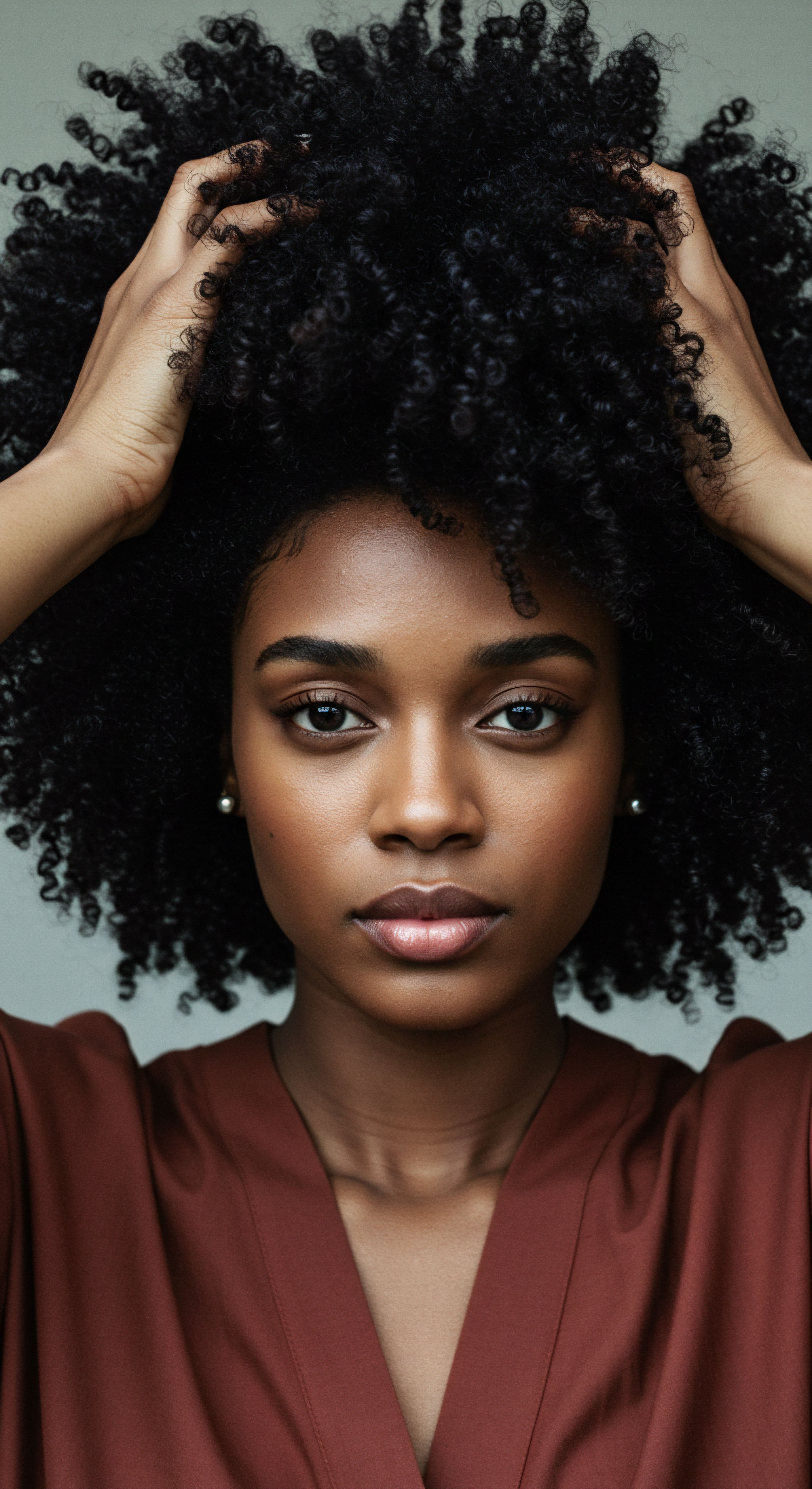
References
- Plonka, P. M. Handwerger, S. & Pielka, E. (2005). Hair follicle cycling is regulated by the circadian clock. Journal of Investigative Dermatology, 124(2), 332-337.
- Goodman, L. (1995). African Hair ❉ Ancient History, Modern Practice. Frontline Publishers.
- Lad, V. (1990). Ayurveda ❉ The Science of Self-Healing. Lotus Press.
- Gopinath, S. (2016). Hair Care and Beauty ❉ Traditional Indian Secrets. CreateSpace Independent Publishing Platform.
- Robbins, C. R. (2012). Chemical and Physical Behavior of Human Hair (5th ed.). Springer.
- Khumalo, N. P. & Mkhize, N. (2015). Hair ❉ A Cultural History of Hair in Southern Africa. Wits University Press.
- Montagna, W. & Ellis, R. A. (1958). The Biology of Hair Growth. Academic Press.
- Paus, R. & Cotsarelis, G. (2008). The Biology of Hair Follicles. The New England Journal of Medicine, 359(12), 1279-1280.